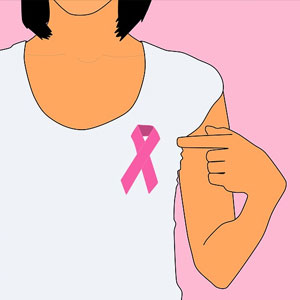Resolution of Hot Flashes with Chiropractic
The Journal of Upper Cervical Chiropractic Research published the results of a case study on October 29, 2018, documenting the resolution of a woman's hot flashes under chiropractic care. Hot flashes are the most common condition of women who are entering menopause.
 According
to the Mayo Clinic's website, "Hot flashes are sudden feelings
of warmth, which are usually most intense over the face, neck
and chest. Your skin might redden, as if you're blushing. Hot
flashes can also cause sweating, and if you lose too much body
heat, you might feel chilled afterward. Although other medical
conditions can cause them, hot flashes most commonly are due to
menopause — the time when menstrual periods become irregular and
eventually stop."
According
to the Mayo Clinic's website, "Hot flashes are sudden feelings
of warmth, which are usually most intense over the face, neck
and chest. Your skin might redden, as if you're blushing. Hot
flashes can also cause sweating, and if you lose too much body
heat, you might feel chilled afterward. Although other medical
conditions can cause them, hot flashes most commonly are due to
menopause — the time when menstrual periods become irregular and
eventually stop."
Hot flashes are not a life-threatening condition, but they are an annoyance and can be severe enough to disturb a woman's daily life. The authors explain, "Hot flashes do not typically cause any health concerns, but may interrupt sleep, and can impact the general health and well-being of some women, but the risks are minimal. The most concerning impact of hot flashes is the discomfort they bring to women and the sudden onset at inconvenient times and places. Hot flashes usually cause a heated or warm sensation throughout the core, chest, face, neck, and head along with sweating and possibly chills directly afterwards and can last anywhere from a half minute up to 10 or sometimes 15 minutes."
In this case, a 57-year-old woman presented herself for chiropractic care. Her primary reason for seeking chiropractic was several weeks of right-sided sciatic pain, along with low back pain and pain between her shoulders. Ten years earlier, she had been involved in an automobile accident in which her car was rear-ended resulting in temporary neck pain. In addition to her pain symptoms that brought her to the chiropractor, it was reported that she was also suffering with hot flashes.
A chiropractic examination involving palpation, range of motion, posture analysis and x-rays was performed. From the examination, it was determined that subluxation was present and specific forms of chiropractic care were started.
The results of the study only reported on the first six weeks of her care, which is when a re-evaluation was performed. Results beyond the first six weeks were not included in this study. At the time of her re-evaluation, the woman made three specific comments regarding her progress. She reported that her "leg numbness improved", her "leg muscle spasms improved" and she had "no hot flashes for the last 2 weeks." At that point, she rated herself at about 50% improvement for the symptoms that brought her to the chiropractor.
The authors of the study summed up the case by stating, "This was a case where the patient had been experiencing approximately 10 hot flashes per day while simultaneously suffering from sciatic pain and low back pain. The hot flashes this patient was experiencing completely resolved after four weeks of care and the sciatic pain improved 50% in six weeks."
 The
study begins with a definition of posture. "Human posture is
defined as the set of angles expressed at each joint that
determine the relative disposition among the segments of the
body and the maintenance of the body mass over the base of
support." They further explain that standing upright
requires a complex combination of neurological and
biomechanical responses to the position of the human body
while standing. The ongoing feedback from the parts of the
body back to the central nervous system allow the body to
make the continual tiny adjustments needed to stand erect,
walk, or perform any basic movement.
The
study begins with a definition of posture. "Human posture is
defined as the set of angles expressed at each joint that
determine the relative disposition among the segments of the
body and the maintenance of the body mass over the base of
support." They further explain that standing upright
requires a complex combination of neurological and
biomechanical responses to the position of the human body
while standing. The ongoing feedback from the parts of the
body back to the central nervous system allow the body to
make the continual tiny adjustments needed to stand erect,
walk, or perform any basic movement.  Common medical practice for
breech presentation is to schedule a cesarean delivery
instead of allowing the baby to be born breech. The study
notes that breech presentations will rarely spontaneously
reposition to cephalic presentation beyond 34 weeks of
pregnancy. Because of this, 80-100% of breech presentations
are delivered by caesarean section. On occasion, a medical
procedure known as an external cephalic version (ECV) is
used to attempt to physically turn the baby by pushing from
the exterior.
Common medical practice for
breech presentation is to schedule a cesarean delivery
instead of allowing the baby to be born breech. The study
notes that breech presentations will rarely spontaneously
reposition to cephalic presentation beyond 34 weeks of
pregnancy. Because of this, 80-100% of breech presentations
are delivered by caesarean section. On occasion, a medical
procedure known as an external cephalic version (ECV) is
used to attempt to physically turn the baby by pushing from
the exterior. In addition to the financial
considerations, the condition itself, as well as the
treatment to address it, has been shown to have substantial
effects of the patient's quality of life, and specifically
the ability to get proper sleep. The study reports that
sleep disturbances and sleep disorders are a common problem
for those diagnosed with cancer as well as cancer survivors.
Even without a diagnosis of cancer, sleep disorders
themselves are a significant health issue affecting between
50 and 70 million Americans.
In addition to the financial
considerations, the condition itself, as well as the
treatment to address it, has been shown to have substantial
effects of the patient's quality of life, and specifically
the ability to get proper sleep. The study reports that
sleep disturbances and sleep disorders are a common problem
for those diagnosed with cancer as well as cancer survivors.
Even without a diagnosis of cancer, sleep disorders
themselves are a significant health issue affecting between
50 and 70 million Americans.  Although there is no clear study
showing the number of children that suffer with SPD, surveys
of parents put estimates of children entering kindergarten
with SPD to be as high as 13.7%. Some studies and
authorities estimate that just over 5% of children have some
form of SPD.
Although there is no clear study
showing the number of children that suffer with SPD, surveys
of parents put estimates of children entering kindergarten
with SPD to be as high as 13.7%. Some studies and
authorities estimate that just over 5% of children have some
form of SPD.  Many women desire to have
vaginal births after cesarean due to vaginal birth enhancing
the health and well-being of the mother and baby, promotion
of maternal infant connection and easing the transition to
motherhood.
Many women desire to have
vaginal births after cesarean due to vaginal birth enhancing
the health and well-being of the mother and baby, promotion
of maternal infant connection and easing the transition to
motherhood.